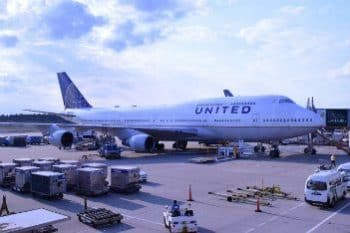When passengers board an airline flight, their minds are usually focused on the quality of the pilot and the ability of the plane to make it to their destination. Truth be told, a slip and fall accident is not foremost on most passenger’s minds. As part of airline safety, all airlines are very observant when it comes to the potential for slip and fall issues. The airline responsibility for the safety of its passengers extends to the moment the passengers step foot inside the airport concourse. Until passengers are safely inside the concourse, airlines are very aware of slip and fall issues.
Airline Passenger Sustains Injuries While Disembarking
A woman in Beaumont, Texas is suing American Airlines because she says they neglected to make sure that she reached the tarmac of the airport safely. It was on a commuter flight where passengers board and disembark on the tarmac and then walk to the concourse, where this happened. The victim says that the crew on the American Airlines plane made no attempt to help her safely descend the stairs to the tarmac, despite the fact that the stairs were wet from a misty rain.
The injuries sustained in this particular slip and fall accident were severe enough to cause the victim to sue for disfigurement, along with pain and suffering. Is it an airline’s responsibility to make sure that the passenger safely disembarks down a flight of wet stairs? Judging by the airline responsibilities laid out earlier, the airline was most definitely negligent in not helping the passenger to navigate the stairs to the tarmac.
Establishing Slip And Fall Responsibility
When it comes to caring for customers, the airline industry has always been held to a higher standard than most other service industries. It is the responsibility of the flight crew to maintain safe walking paths on the plane at all times and to make sure that all passengers safely board and disembark each flight. For example, if a passenger is allowed to have their carry-on bag stick out into the walking aisle in any way and another passenger injures their ankle by tripping over the bag on the way to the bathroom, then the airline is negligent for that injury.
One of the most contentious parts of air travel is the effect turbulence has on passengers. While turbulence is classified as an act of God and not something a pilot can be held responsible for, there have been cases where pilots were held accountable for injuries during turbulence because they did not consult the latest weather reports before charting their courses. If a victim can prove the airline was at fault when their injury occurred, then they may have a case. But proving a pilot is responsible for the weather can be extremely difficult.
It Is Not Always The Airlines That Are At Fault
Airlines tend to outsource many parts of their operations to save on costs. If an airline outsources its plane maintenance duties to a professional organization and a passenger trips and falls over a rug for example- in need of repair, then the maintenance group would be held negligent and not the airline. Issues with food quality, plane operation, and even baggage handling are often not controlled by the airlines and that means that victims would have to determine which outsourced organization was responsible for their injuries.
The flight crew on an airplane is responsible for making sure that every passenger’s flight is safe and free from slip and fall accidents. If you do slip and fall on an airplane, then you could have a personal injury lawsuit on your hands against the airline. It is important to hire a knowledgeable attorney to make sure you are suing the right party for your injury, and that the injury was not your fault in the first place.
